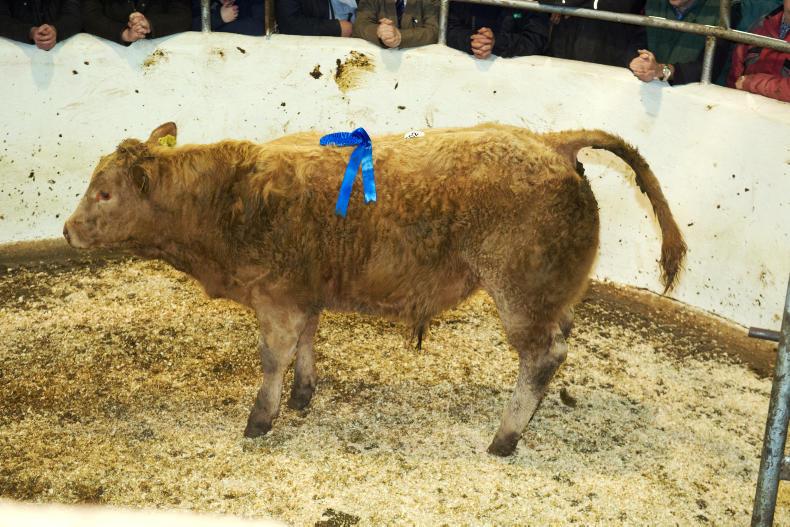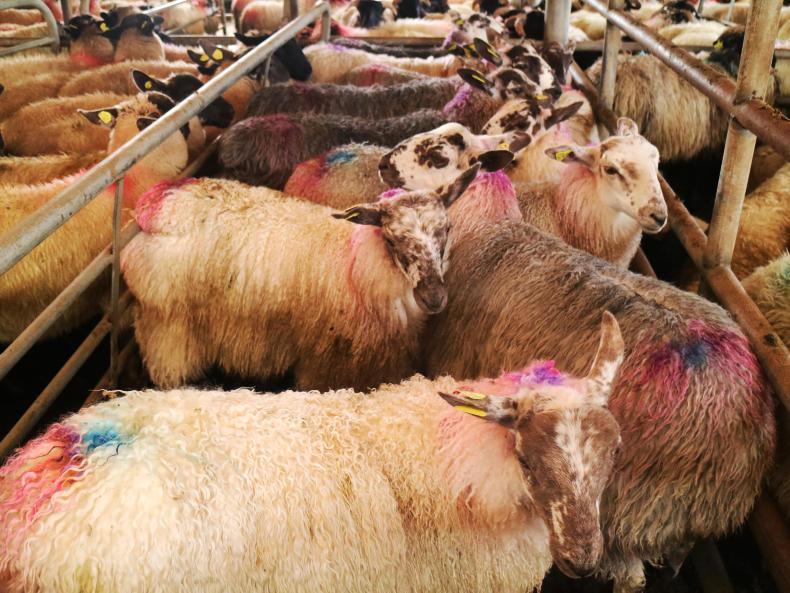Sandy Bar Ranch is owned by Bob and Gail Switzer and was established by Bob’s father in 1945. The herd has run an annual sale for the last 39 years on their home ranch in Aneroid, Saskatchewan, Canada. This year’s sale witnessed a clearance rate of 100% across all lots up for sale, with both online viewing and bidding playing a role in the sale.
Background
Bob is a third-generation farmer and is farming alongside his daughter and two sons, who have expanded their ranch from 3,000 acres in 1973 to 35,000 acres spread across three ranches in 2017.
The family own the Sandy Bar ranch, which is run by Bob, Gail and Bailee, the Valley Blossom ranch, which is run by Beau and Ashley, and finally the Switzer Land Cattle Company, which is run by Kyle and Tara.
The combined ranches run over 650 pedigree Angus cows, 60 commercial cows and a further 1,000 yearling heifers. The family also own a further 700 commercial cows, which are leased out to farmers within the neighbouring states.
This year, Bob is charging $260 per in-calf cow, which are leased out to farmers in November. After year one, the farmers can cull up to 10% of these leased cows if desired. These culled cows are returned to Bob, where he sends them to a feedlot. Bob then replaces these culled cows with heifers from a similar bloodline in order to maintain the genetics of his leased cow herd.
Sale
There were 160 pedigree yearling Angus bulls up for grabs on sale day. It took two hours to sell the 160 bulls. According to Bob: “We sell our stock pretty fast. We’re not here to beg for money. People know what they want. Every single thing is displayed in our catalogues, so it’s easy for people. We often sell bulls in 30 to 40 seconds.”
Prices ranged from $3,000 right up to $18,000, with an average sale price of $6,438. All of the 160 bulls for sale were sired by a total of 12 bulls.
Bob is ruthless in selecting bulls. All bulls sold have been semen-tested, scrotal-size measured and have gone through a minimum of two screenings. These screenings take place on 1 August and 1 November each year.
Any bulls that don’t meet Bob’s standards for quality, docility, size and correctness of feet are castrated and sent to a feedlot to be finished as beef animals.
“We have an 85% repeat customer base, so it is vital that we protect our reputation for breeding bulls proven for quality and longevity. Feeding also plays a big part in the longevity of a stock bull,” said Bob. “We feed our bulls to run with cows, not to get them fat. Our bulls are fed a diet of 75% chopped hay, 25% corn silage and 5% grain ration once per day.”
There were 31 pedigree Angus female yearlings on offer at the sale. These 31 heifers averaged $3,088.
For each purebred animal sold at the sale, their pedigree history and their EPexpected progeny differences (EPDs) are on display in the catalogue. Included in these EPDs are expected birth weight, expected weaning weight, expected maternal ability and expected calving difficulty.
There is also a star rating for bulls on calving difficulty, which ranges from one to three star. One star is known as a cow bull, two stars is known as a bigger heifer/cow bull and three stars is known as a heifer bull.
This system is based on calves’ birth weight and the measurement of the calves’ hocks at birth, which proves to be very successful.
The 400 commercial yearling Angus heifers available were all owned by previous purchasers at the sale over the years. These heifers were sold in lot sizes from five to 25. All of these heifers were available for inspection in pens on farm from the night before the sale commenced and were then sold via TV screens either side of the sale ring. The 400 heifers averaged $1,610, with the highest-priced lot selling for $2,700 each.
The ranch runs an unseen purchase programme, which is for people who are unable to attend the sale. The potential customer can phone the ranch and discuss the type of bull or heifer they are looking for within the customer’s price range.
“This programme works very well,” Bob explained. “About 10% of animals at the sale are sold through this method, with the customers often repeatedly availing of this option.”
Bob has regularly exported cattle throughout the world to countries such as Russia, Kazakhstan, China, Denmark, Japan, New Zealand, the US, Australia and Ireland.
Bob informed us that Michael O’Leary and his herd manager met the Switzer family showing cattle in Edmonton and decided to go to Bob’s sale in 2003, where they purchased four pedigree Angus heifers.
“Michael’s heifers landed in Ireland on 20 May 2003. I remember that day well, because it was the day the news that BSE hit Canada. They were the last heifers I exported for a number of years.”
The Short Grass sale guarantees the free delivery of all cattle purchased at the sale totalling $2,500 or more for up to a distance of 300 miles (483km).
It is common practice at pedigree sales in Canada for vendors to put on a display of food and beverages for all people in attendance and Bob’s sale was no different, with an immense spread of food and drink on hand for everyone present.
“This sale is very important for us. We put in a lot of hard work to get everything ready. We invite all of our friends and family and it’s brilliant to see everyone coming together,” said Bob.
For the past five years, at the end of the sale, six pairs of chickens have been auctioned off in aid of charity. After buying a pair of chickens, people have the option of choosing whatever charity they would like to donate their money to.
This year, the chicken pairs sold for a total of $37,200. In the past five years, a total of over $200,000 has been raised for charities.
Cow herd
Bob described his ideal cow as “one that will wean 50% or more of her mature body weight in the fall. My goal is to raise calves on milk not grain.” Bob begins calving on 10 February and is generally finished by 1 April.
“We usually only assist with 1% of all calvings. We cull from 5% to 10% of the cow herd each year. We have a closed herd, so we breed all of our own replacements. Heifers are let go with a stock bull at 15 months of age and a weight of around 1,000lb (454kg). I only creep feed my bull calves for three weeks just before I wean them.”
Bob tries to have his cows grazing naturally for as long as possible. He said: “We aim not to physically feed our cows for over 80 days per year. The cows graze on grass and corn for the winter period and when supplementation is required, we feed them chopped hay, barley silage and corn silage.”













SHARING OPTIONS